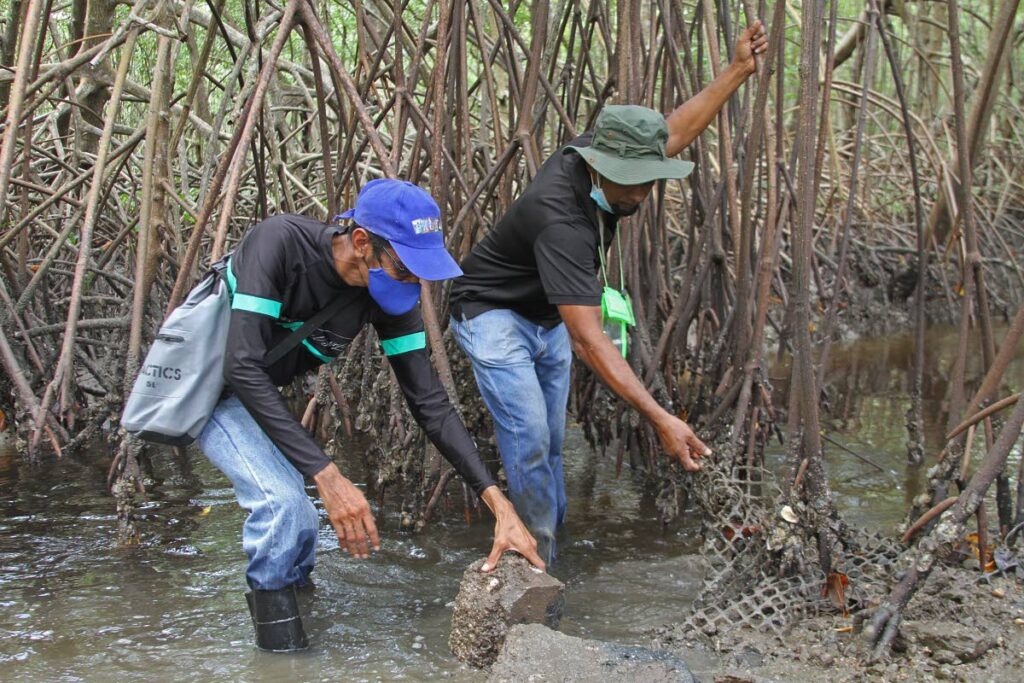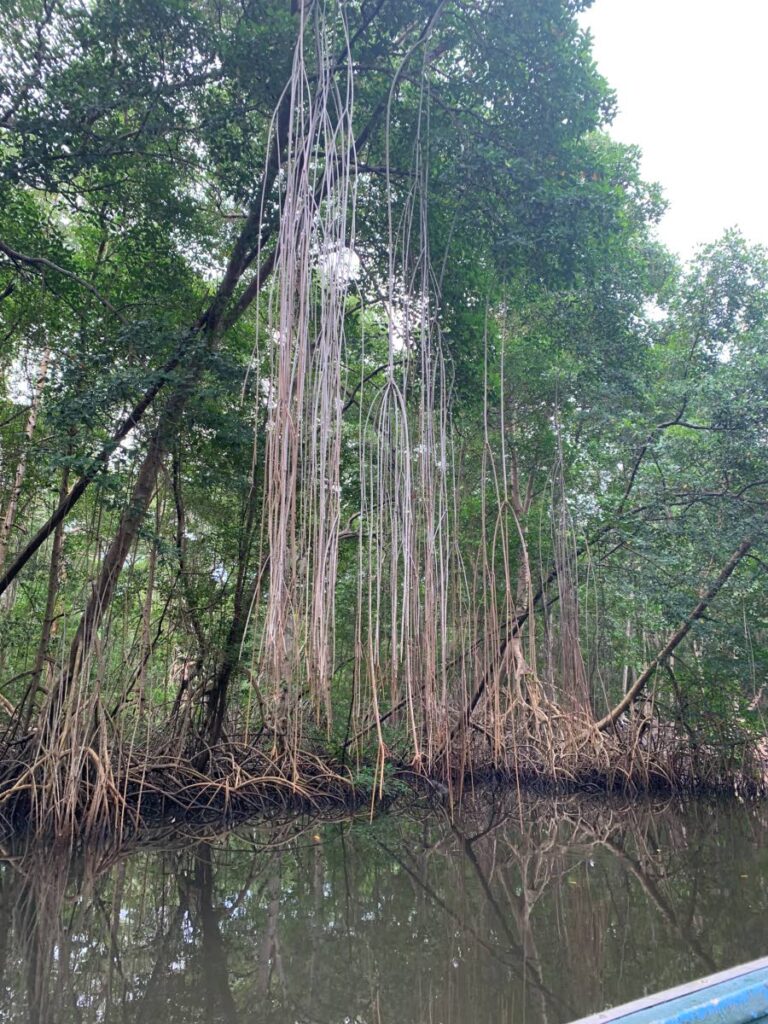Taking time to appreciate our mangrove forests

Rahanna Juman,
Director (Ag)/ Wetlands Ecologist,
Institute of Marine Affairs
Our coastlines, especially the Gulf of Paria, were once lined with large trees supported by massive, entangled roots beaming with wildlife, where our grandfathers and fathers hunted crabs to put in the Sunday callaloo, and harvested oysters that were sold in spicy sauce around the Queen Parks Savannah. Back then we did not fully understand nor appreciate the importance of these coastal forests, so as much as 50 per cent were cleared to build houses, businesses and ports. What are you talking about, you may ask? It’s our mangrove forests.
Mangrove forests are spectacular and prolific ecosystems that are located on the boundary between land and sea. Mangrove trees are salt-tolerant trees, also called halophytes, that are adapted to life in harsh coastal conditions. They contain a complex salt filtration system and complex root system to cope with saltwater immersion and wave action, and are adapted to the low-oxygen conditions of waterlogged mud.
In recent times, we have come to learn more about the value of mangrove forests. Mangroves provide critical ecosystems services, contributing an estimated US$42 billion to global fisheries, storing 25.5 million tons of carbon per year, and providing flood protection to over 15 million people annually (Walker et al 2022). These forests act as an important environmental barrier between shores and lands, protecting the inhabiting ecological and social communities from the adverse impacts of extreme events, such as hurricanes and storms worldwide.

Mangroves have a significant effect on the extent of inundation and damages caused by coastal flooding. It is estimated that if all the mangroves in the world were lost, 18 million more people would be flooded every year on average, an increase of almost 40 per cent, and the annual damage to property would increase by US$82 billion.
A 2019 World Bank study sets the annual value of Jamaica’s mangrove forests for flood risk reduction to the nation’s built capital at more than US$2,500 per hectare per year. In Trinidad, floods are the most common and widespread of all natural disasters and there is strong evidence that, in a warming world, destructive floods will become more common and intense, adversely affecting the lives of even more people.
In addition to providing protection against coastal flooding, mangrove forests have the highest area rates of carbon capture and storage compared with any other ecosystem, terrestrial or marine, contributing disproportionately as a carbon sink, if left undisturbed. On average, mangroves have a mean whole-ecosystem carbon stock of ~950 t C ha−1 which is around 2.5–5 times higher than the mean ecosystem carbon stock found in temperate, boreal and upland tropical forests (200–400 t C ha−1) (Alongi, 2012).
Initial estimates of carbon stored in the aboveground biomass of mangrove forests in TT is 809,085.92 tonnes. Comparing mangrove forest carbon to terrestrial forest carbon revealed that per hectare, mangrove forests store 61 per cent more carbon than terrestrial forests in Tobago, while for Trinidad the value was 44 per cent (Juman et al 2021). Clearly, there can be a major climate benefit to slowing the rate of mangrove conversion.
In TT, the mangrove forests also provide livelihoods for people who harvest and sell fish and shellfish; the most economically important is the harvest and trade of the hairy crab, the blue crab and the mangrove oyster. Many also earn a living as tour guides as mangrove forest provide invaluable opportunities for recreation and tourism. They are important tourist destinations because of their aesthetic value and high biodiversity. The Caroni Swamp is one of the most popular eco-tourist sites in Trinidad. It is especially popular with bird-watchers because of its rich avifauna population, and tour guides have been earning a living from the swamp for generations.

Despite their key role in helping cope with climate change and providing livelihood opportunities, mangrove forests continue to be degraded by human’s activities. Mangrove deforestation is subject to a multitude of social-ecological drivers, ranging from climate change (eg increased salinity driven by increasing temperatures and natural disasters- tropical cyclones and tsunamis) to pollution and anthropogenic exploitation (encroachment, exploitation of forest resources, water withdrawal, urbanization, and upstream pollution) (Walker et al 2022).
In commemoration of International Day for the Conservation of the Mangrove Ecosystem, on July 26, let us all reflect on the crucial role our mangrove forests play in our everyday life, in our food, our culture, our way of life. At the Institute of Marine Affairs (IMA), we will continue to conduct research and monitoring of mangrove forests so as to provide the scientific data required to effectively manage and restore these essential ecosystems so they can continue to provide ecosystem services for all citizens on our beautiful island state. Work with us, to conserve our mangroves!
References:
Alongi, D (2012). Carbon sequestration in mangrove forests. Carbon Management 3(3), 313–322.
Juman, R, Asmath, H, Gooding, N and Collins, G. 2021. Mangrove Forests of Trinidad and Tobago, Institute of Marine Affairs, Chaguaramas, Trinidad and Tobago
Walker, J.E., Ankersen, T., Barchiesi, S., Meyer, C.K., Altieri, A.H., Osborne, T.Z. and Angelini, C., 2022. Governance and the mangrove commons: Advancing the cross-scale, nested framework for the global conservation and wise use of mangroves. Journal of Environmental Management, 312, p.114823.
World Bank. 2019. “Forces of Nature: Assessment and Economic Valuation of Coastal Protection Services Provided by Mangroves in Jamaica”

Comments
"Taking time to appreciate our mangrove forests"